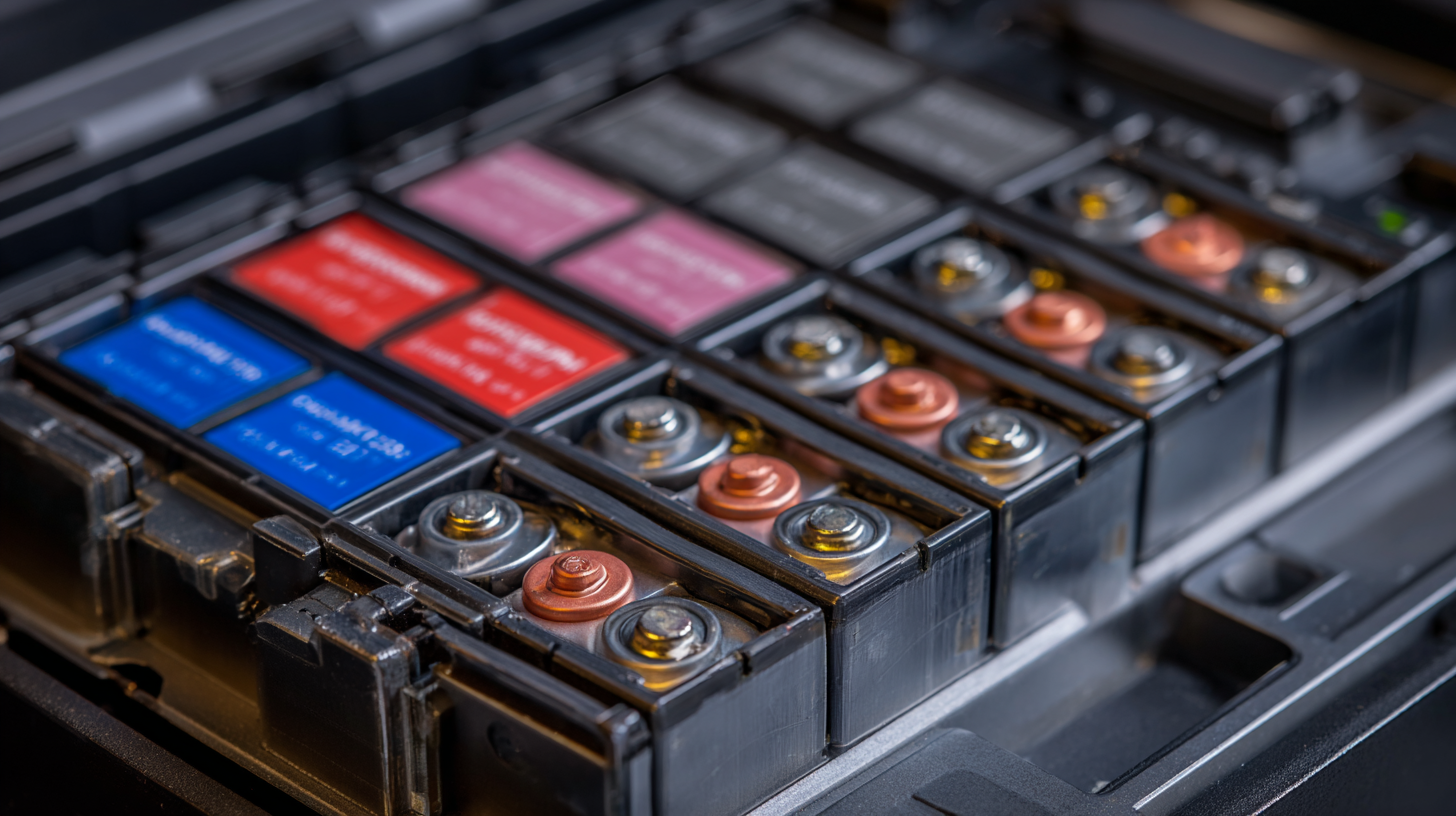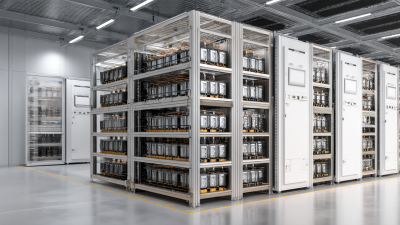The Future of Energy Storage Understanding the Science Behind Battery Packs
As we progress into an era increasingly reliant on renewable energy sources, the importance of efficient energy storage solutions becomes ever more pronounced. At the heart of this transformation lies the battery pack, an integral component that plays a pivotal role in capturing, storing, and delivering energy when it's needed most.

Understanding the science behind battery packs not only illuminates their functionality but also empowers us to make informed decisions regarding their use and development. In this guide, we will delve into the intricacies of battery pack technology, exploring the various types and innovations that are shaping the future of energy storage.
From lithium-ion advancements to emerging alternatives, we'll equip you with essential insights and practical tips to navigate the evolving landscape of energy storage solutions, ensuring you're prepared for the challenges and opportunities that lie ahead.
Understanding the Basic Concepts of Battery Chemistry in Energy Storage
As the demand for renewable energy sources continues to rise, the importance of understanding battery chemistry in energy storage takes center stage. Advanced battery technologies play a crucial role in optimizing energy storage solutions, particularly lithium-ion batteries, which accounted for approximately 82% of the global battery market in 2020, according to a report by Statista. The basic concepts of battery chemistry encompass crucial aspects such as electrochemical reactions, charge-discharge cycles, and the role of electrolytes.
One of the most significant advancements in battery technology is the improvement in energy density, allowing batteries to store more energy in a smaller space. Current lithium-ion batteries have an energy density ranging from 150 to 200 Wh/kg, but research is focusing on solid-state batteries aiming to exceed 500 Wh/kg, as suggested by the National Renewable Energy Laboratory. These high-capacity batteries not only enhance the efficiency of energy storage systems but also contribute to the viability of electric vehicles and renewable energy integration. Understanding these fundamental battery chemistry concepts is pivotal to future innovations and the transition towards sustainable energy solutions.

Exploring Different Types of Battery Technologies and Their Applications
Battery technologies have evolved significantly over the past few decades, offering diverse solutions tailored to various applications. Lithium-ion batteries, for example, are widely used in portable electronics and electric vehicles due to their high energy density and long cycle life. Their ability to recharge quickly and support high-performance demands has made them the gold standard for modern energy storage systems. Innovations in lithium-ion technology, such as solid-state batteries, promise even greater safety and efficiency, making them a focal point for future advancements.
Another promising technology is solid-state batteries, which utilize solid electrolytes instead of liquid ones. This shift enhances safety by reducing the risk of leaks and fires, while also potentially increasing energy density. Furthermore, flow batteries and sodium-ion batteries are emerging as viable alternatives for large-scale energy storage applications, such as grid stabilization and renewable energy integration. Flow batteries, for example, enable scalable and long-duration storage solutions, addressing the intermittent nature of renewable energy sources like solar and wind. As we move towards a more sustainable energy future, exploring these diverse battery technologies will be crucial for meeting global energy demands efficiently.
Assessing the Role of Renewable Energy in Future Battery Storage Solutions
The role of renewable energy in future battery storage solutions is increasingly pivotal as the world transitions to sustainable energy systems. As solar and wind energy sources become more prevalent, the need for effective energy storage solutions that can balance supply and demand is critical. Battery packs, particularly those developed using advanced technologies, can store excess energy produced during peak generation times and release it when production falls short, ensuring a stable energy supply. This synergy between renewable energy and battery storage not only enhances grid reliability but also maximizes the use of clean energy.
Furthermore, innovations in battery chemistry, such as lithium-ion and beyond, play a significant role in influencing the feasibility and efficiency of energy storage systems. With ongoing research aimed at improving battery lifespan, charge times, and environmental impacts, the integration of renewable energy into battery storage solutions is set to evolve rapidly. By harnessing breakthroughs in materials science and sustainable practices, future battery systems will significantly contribute to the decarbonization of energy grids, steering us toward a more resilient and clean energy future.
The Future of Energy Storage: Understanding the Science Behind Battery Packs
Analyzing Advances in Battery Management Systems for Enhanced Performance
The future of energy storage hinges significantly on advancements in battery management systems (BMS). These systems are vital for optimizing battery performance, ensuring safety, and extending lifespan. Recent reports indicate that the global BMS market is projected to grow from $3.2 billion in 2020 to over $8 billion by 2027, reflecting the increasing demand for efficient energy solutions in electric vehicles (EVs) and renewable energy systems. This growth underscores the necessity for advanced algorithms and control strategies that enhance energy distribution and charging cycles.

Innovations in BMS technology enable real-time monitoring and data analytics, which are essential for maximizing performance. For instance, sophisticated thermal management strategies can prevent overheating and reduce the risk of battery failure. According to a study by the International Energy Agency, effective thermal management can improve battery cycle life by up to 30%, significantly lowering overall operational costs. With the integration of artificial intelligence and machine learning, future BMS will not only manage the current performance but also predict potential issues, leading to smarter, more resilient battery systems that can accommodate the increasing demands of modern energy applications.
Investigating Environmental Impact and Sustainability in Battery Production and Disposal
The future of energy storage is not only about innovation but also sustainability. As the demand for solar energy and electric vehicles escalates, the challenge of managing battery waste has become critical. A recent report projects that the global solar panel recycling market will reach $274.21 million in 2024, soaring to $2.48952 billion by 2032. This reflects a compound annual growth rate of 31.75%, showcasing the increasing necessity for efficient recycling solutions to handle the environmental impact of used battery packs.
Furthermore, as electric vehicle adoption surges, the issue of discarded lithium batteries poses a pressing concern. The environmental ramifications of improper disposal can be severe. Innovative battery recycling startups are emerging, aiming to address this crisis by developing technologies that minimize environmental damage while recovering valuable materials. Efforts like these can alleviate the pressure on lithium mining in Latin America, as recycling can provide a sustainable alternative to raw material extraction, thus fostering a circular economy in the energy storage sector.
The Future of Energy Storage: Understanding the Science Behind Battery Packs - Investigating Environmental Impact and Sustainability in Battery Production and Disposal
| Dimension | Data |
|---|---|
| Battery Type | Lithium-ion |
| Typical Energy Density (Wh/kg) | 150 - 250 |
| CO2 Emissions from Production (kg/kWh) | 200 - 300 |
| Average Lifespan (Cycles) | 500 - 1500 |
| Recycling Rate (%) | 50 - 90 |
| Transition to Renewable Materials (%) | 20 - 40 |
| Water Usage (l/kWh) | 2 - 4 |
| Battery Disposal Methods | Recycling, Landfilling, Incineration |
Related Posts
-

Understanding the Rise of Gel Batteries in Renewable Energy Storage Systems
-

Exploring the Benefits and Applications of Sealed Lead Acid Batteries in Modern Technology
-

What are the Key Features of Lawn Mower Batteries You Should Know?
-

Emerging Trends in Emergency Light Battery Technology at the 138th Canton Fair 2025
-

Batteries Delivered Revolutionizing Supply Chains at the 138th China Import and Export Fair 2025
-

Unveiling Battery Acid Innovations at the 2025 China Import and Export Fair
